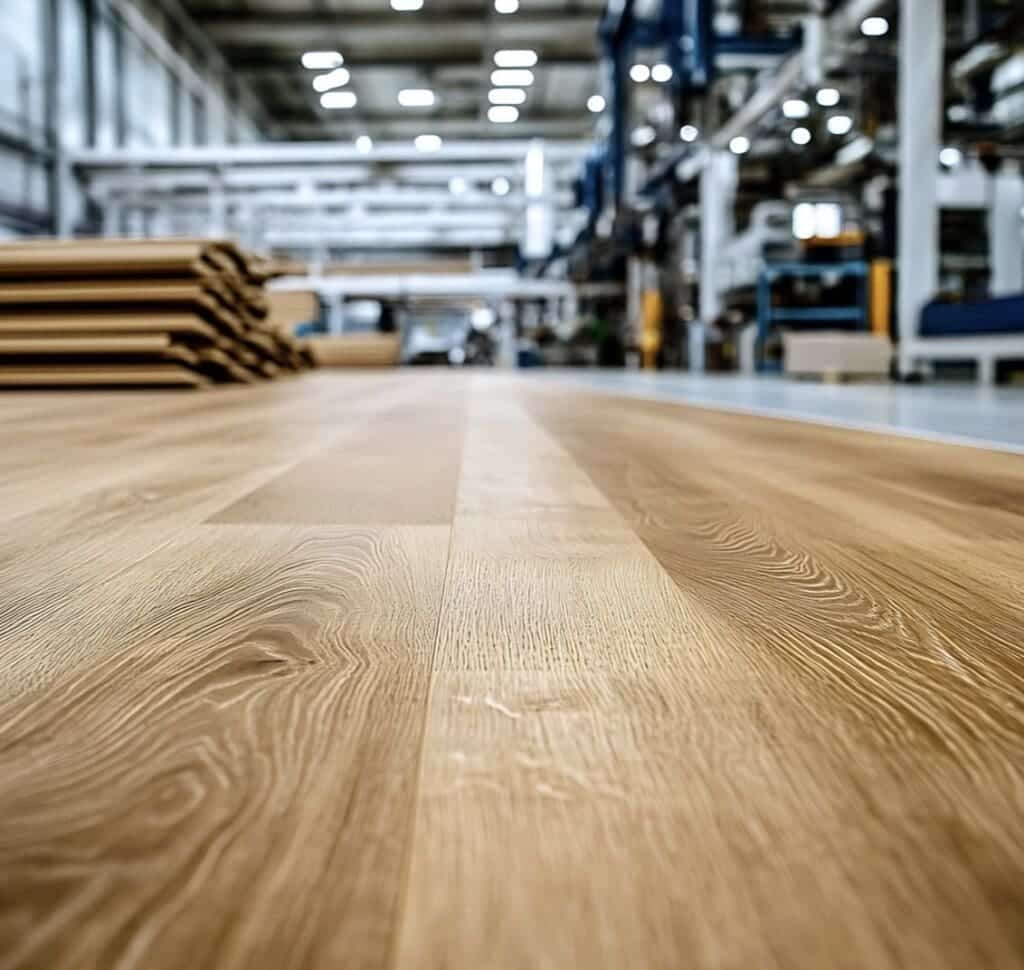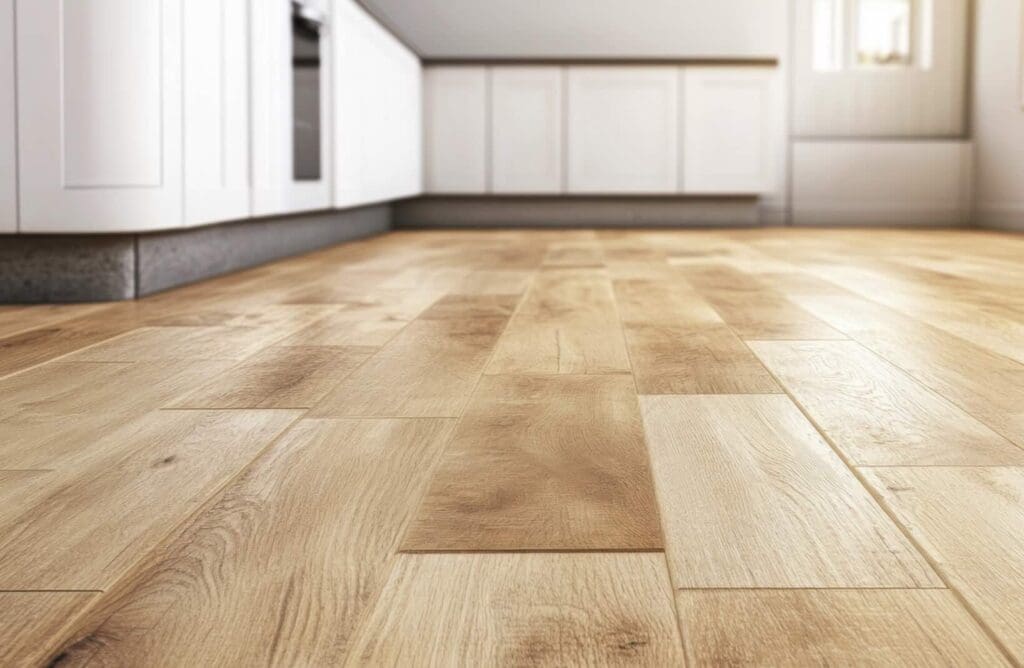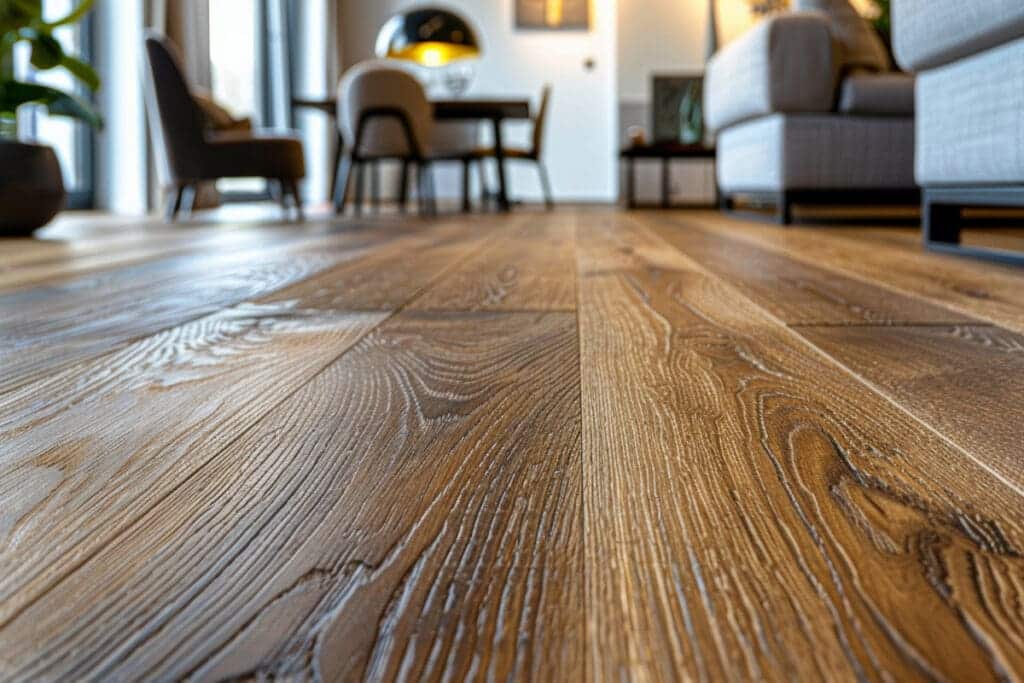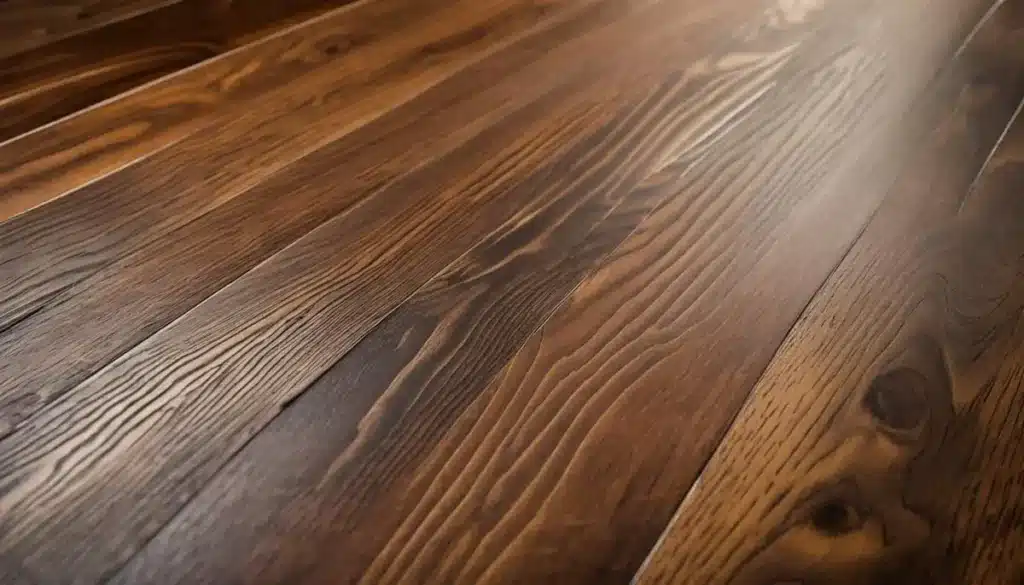With its rich aesthetic appeal and high durability, engineered wood flooring has established a significant global footprint. As we dive deeper into understanding the landscape of this industry, we will explore key market players, crunch sales data, and peek into consumer preferences for these products.
From examining quality indicators like wood grades and veneer thickness to understanding how cutting-edge technology contributes to the evolution of wood flooring, we aim to provide a comprehensive perspective on the engineered wood flooring industry.
Table of Contents
- Market Landscape of Engineered Wood Flooring
- Product Quality Assessment
- Innovation and Technological Influence
- Investment and Profitability Analysis
- Future Trends in Engineered Wood Flooring
- Related Content
Market Landscape of Engineered Wood Flooring
Engineered Wood Flooring: A Market Illuminated by Innovation
Understanding emerging markets and trends is essential when shaping the perfect business model or designing a flawless entrepreneurial venture. One such vibrant and promising sector is engineered wood flooring—an industry evolving quickly.
Engineered wood flooring has revolutionized the global market with its unique blend of beauty, durability, and sustainability. This composite product consists of several thin layers of wood glued together to form a sturdy board, with the top layer showing the natural wood grain.
The market’s growth potential for engineered wood flooring is significant, as it ticks many vital boxes for modern homeowners and businesses. It’s not only stylish and versatile, but it’s also long-lasting, cost-effective, and environmentally friendly.
However, the capacity for innovation truly sets this industry on fire. A boom in interior design trends favoring natural yet durable materials paves the way for more significant investments in engineered wood flooring, steering modern living toward a stylish, sustainable future.
The key driver behind this industry’s exponential growth is the continual investment in innovative technologies. These technologies allow the designing and producing a wide array of patterns, styles and finishes that perfectly mimic exotic and expensive hardwoods, thus increasing its appeal.
Furthermore, the significant environmental benefits of engineered wood flooring further boost its market appeal. With a keen eye for sustainability, the industry is geared towards responsible usage of natural resources, with a lower demand for raw wood than traditional flooring alternatives. For savvy entrepreneurs, this burgeoning emphasis on green design fuels promising opportunities.
Professional network understandings highlight the market’s substantial push towards establishing robust distribution channels. Brand visibility and consumer reaching capacity enabled by wholesale distributors, retail stores, and online providers are fueling the growth of this industry, increasing the competitive edge of the sector as a whole.
In this dynamic landscape, customization is a key factor in enhancing the competitive edge. Companies with options for bespoke designs catering to individual clients’ unique aesthetics and specifics resonate with modern consumer needs, leading to notable business growth.
Nonetheless, it remains vital to manage this promising sector’s challenges accurately. Occasionally, engineered wood flooring can face criticism due to the perceived lack of authenticity compared to solid hardwood, and robust marketing strategies are required to debunk this misconception.
So, in an era where style and sustainability go hand in hand, and innovations dictate market trends, engineered wood flooring confidently strides toward a promising horizon.
Entrepreneurs and business-savvy individuals note this space for potential investments and watch out for its continuous growth. With the right insights, this could be the venture that sets a precedent in green design and profitable entrepreneurship.

Product Quality Assessment
In the next segment of our discussion on engineered wood flooring, we’ll turn to the critical matter at hand – assessing the quality and durability of your options.
This is a vital topic, as flooring is not just a visual statement of your surroundings but a foundational aspect of your environment that must withstand the wear and tear of daily life.
Let’s dive into the substance of engineered wood. Here, the trick is to laser-focused on the veneer or top layer, which comprises the ‘real’ hardwood. The thickness of this layer varies and is directly correlated with the lifespan of your flooring.
A thicker veneer can stand up to more rounds of sanding and refinishing, extending your floor’s longevity. It’s recommended to consider options with a veneer thickness of at least 2mm.
The below surface layers, too, are not to be disregarded. Constructed from multiple layers of lesser-grade woods, their composition and arrangement contribute to the durability. Multi-ply construction, where several thin layers of wood are glued together, enhances dimensional stability, lowering warping odds.
Switching over to the bonding agents, it’s key to opt for those that are formaldehyde-free, a chemical linked to adverse health effects when emitted over time. Securing a product certified by a credible regulatory body can add an extra insurance layer to the health and safety issue.
For the best estimates of longevity, turn your lens towards the finish. Floors protected with a high-quality finish, preferably aluminum oxide, provide an impressive shield against scratches, stains, and moisture—an essential feature, especially in high-traffic and humid areas.
In this technologically advanced era, one cannot afford to ignore the digital angle. Utilize online resources, scan customer reviews, and learn from their firsthand experiences. Take note, however, to sieve out biases and consider multiple sources for a balanced perspective.
Another paramount aspect when making your choice is the manufacturer’s warranty. It can serve as a proxy for manufacturers’ belief in their products. A warranty spanning decades can bring a huge sigh of relief!
Next, do not overlook the power of a conversation. Tap into your professional networks to gain industry insiders’ insights. Attend home shows and conventions or converse with retailers and installers.
In conclusion, the endeavors to pinpoint quality in engineered wood flooring may appear overwhelming. Yet, when systematically approached, factoring in the veneer thickness, multiple layers’ quality, bonding agents, finish type, online reviews, warranties, and industry insights can drastically narrow your option’s road map.
Armed with this knowledge, you’re now ready to navigate the world of engineered wood flooring and make a tailor-made decision to your specific needs. Remember, flooring serves function and form – a visual and tactile demonstration of your lifestyle and aesthetics. Choose wisely!
Innovation and Technological Influence
Navigating Innovative Technologies Within Engineered Wood Flooring
The landscape of engineered wood flooring is dramatically evolving; technology is the driver behind this transformation. These innovations are changing the parameters of quality, durability, and customer experience in the engineered wood flooring industry.
Quality and Durability: Not All Engineered Wood Flooring is Created Equal
One of the main areas where technology plays a critical role in engineered wood flooring is improving product quality and durability. Through the application of innovative techniques, manufacturers are crafting floors that offer unmatched toughness and lifespan.
The secret lies in the veneer or top layer and its substantial contribution to the product’s longevity. New technologies aid in the creation of veneers that are not only attractive but also highly resistant to wear and tear.
Besides the veneer, the key lies in the wood layers beneath the surface. The composition and arrangement of these layers significantly impact the flooring’s durability. Advances in woodworking technologies are enabling the production of multilayered wood products that flaunt superior stability and performance.
More manufacturers are leaning toward formaldehyde-free bonding agents in the quest for healthier living spaces. This chemical was once a popular choice for binding wood fibers, but its potential hazards brought about a need for safer alternatives.
Current innovations are filling this gap, yielding adhesive technologies that balance health considerations without sacrificing product performance.
The Finishing Touch: High-Quality Finishes
No engineered wood flooring is complete without a protective finish, and a high-quality one, such as aluminum oxide, offers remarkable benefits. This finish provides a hardened shield that stands up to scratches and is used more effectively than traditional finishes. Its popularity is a testament to the advancements in surface finish technologies for engineered wood flooring.
Information At Your Fingertips: Online Resources and Customer Reviews
The digital age is redefining how consumers gather information and make purchasing decisions. Powerful online resources with in-depth reviews and extensive product information make the selection process easier. It’s an innovation that empowers customers to glean insights into others’ experiences and make informed decisions.
The Assurance of Warranties
Align with manufacturers who stand by their products, offering warranties that lend consumers peace of mind. Progressive companies invest in technologies to produce robust, high-quality products that they confidently back with a warranty, proving they are leaders within the industry.
Continued Learning: Home Shows, Conventions and Industry Insiders
No technological innovation is beneficial if it remains secluded in a lab. That’s where home shows, conventions, and industry insiders play a crucial role. They bridge the gap between the innovators and end-users, showcasing new technologies and helping individuals understand what’s on the horizon for engineered wood flooring.

Investment and Profitability Analysis
One of the biggest drivers of market growth in the engineered wood flooring industry is the increasing demand for high-quality, long-lasting products. This demand has driven manufacturers to focus on the technical aspects of their products to gain a competitive advantage, which has led to the production of more durable and higher-quality products.
The quality and durability of engineered wood flooring isn’t just important for the consumer, it’s also a clear display of a company’s capability to deliver high-grade products, thus signalling potential for high investment returns.
As a case in point, the outer veneer or top layer of engineered wood greatly determines its lifespan. Innovations in technology have made it possible to produce sturdy and authentic-looking veneers that last for impressive timeframes.
Though the veneer is of utmost importance, the composition and arrangement of the layers beneath the surface are also integral to the durability of the flooring. Firms that master this aspect of production are in a better place to dominate the market and, therefore, present a strong investment case.
Moreover, there’s been a shift in health consciousness among consumers, leading to the industry favoring formaldehyde-free bonding agents – a trend reflective of a company’s dedication to product quality and user safety. On a related note, high-quality finishes like aluminum oxide can enhance durability while providing a richer look, another factor investors appreciate.
Furthermore, potential and current customers are digging deeper into the products through online reviews and customer feedback. This culture has forced manufacturers to up their game in product quality, thereby indirectly raising the industry benchmark and, consequently, the returns for investors.
Manufacturers’ warranties also play a significant role in indicating investment potential. Companies that back their products with solid warranties can be attractive to investors due to the guaranteed customer satisfaction they suggest.
Also, industry events such as home shows and conventions often showcase new technologies in engineered wood flooring. These events are an excellent place for investors to scope out companies with unique, innovative solutions that could disrupt the market.
When evaluating opportunities in the engineered wood flooring market, an undeniable financial case must be made. With various metrics spearheaded by quality and durability, it is evident that this industry is reshaping itself through innovation and technology, which in turn could offer lucrative returns for savvy investors.
Understanding the deep correlations between these topics and how they impact the industry will likely ensure successful investment ventures.

Future Trends in Engineered Wood Flooring
Diving into the Future Trends of the Engineered Wood Flooring Market
With the robust evolution of the engineered wood flooring industry, an increasing focus has been shifted towards quality and durability. This rising expectation has been catalyzed by consumer desire for high-quality, long-lasting products that transcend the typical wear-and-tear lifespan.
This emphasis on quality has made the outer veneer, or the top layer, a crucial component not only for aesthetic appeal but also for guaranteeing a long lifespan.
Underneath this exterior layer, the composition and arrangement of below-surface layers equally contribute to the durability of engineered wood flooring. Forward-thinking manufacturers are now integrating technological advancements into the woodworking process to enhance the longevity of these layers.
These advanced technologies enable the production of more assertive, more resilient engineered wood flooring — proving that the race of innovation doesn’t stop at surface value.
Another critical factor influencing future trends is a shift towards formaldehyde-free bonding agents. This change demonstrates the increasing health consciousness among consumers and their preference for eco-friendly home solutions.
This demand will not dwindle soon; aligning with it can give those in the engineered wood flooring industry a competitive edge.
The importance of a high-quality finish should not be understated either. An elegant finish, for instance, aluminum oxide, not only enhances the aesthetic appeal but also contributes to the durability of the flooring. It seals the deal on an already high-quality product by adding an extra layer of protection.
Now, think for a moment about the power of online resources and customer reviews. In the digital age, they have emerged as crucial players in the decision-making process of end consumers. Their influence on the engineered wood flooring industry is set to rise even further as manufacturers increasingly utilize this feedback loop to fine-tune their offerings.
On the other hand, warranties offered by manufacturers can also be game-changers in guaranteeing product quality. Warranties become significant statements of trust in product quality and provide reassurance to customers, enhancing the investment potential of the engineered wood flooring market.
Industry events such as home shows and conventions are also forecasted to play an instrumental role. They provide an avenue for showcasing new technologies, innovative solutions, and industry insights that cater to the changing customer preferences and market demands.
A broader look at the financial landscape indicates a compelling case for investing in the engineered wood flooring market — especially when understanding correlations and industry impacts. The sophisticated entrepreneur would focus on this industry for its evident growth potential and high return on investment.
The future of the engineered wood flooring industry promises a rendering of quality, durability, and technological innovation. Manufacturers can build a resilient and sustainable path for their business by strategically navigating future trends and leveraging opportunities.
After all, the future of engineered wood flooring lies in more than just the beauty of its design but equally as much in its depth of character, quality, and resilience.

As we wrap up, we gaze into the future of engineered wood flooring. The myriad variables at play, from evolving consumer preferences and the ongoing push toward environmental sustainability to relentless tech innovations, promise a future as dynamic as it is uncertain.
The interplay of these factors sets the stage for potential shifts in the industry, offering growth opportunities for those who adapt and innovate. This analysis of the current landscape and potential future trends in engineered wood flooring seeks to equip readers with a more profound understanding of the industry, aiding in well-informed decisions for investment purposes, property development, or personal use.
If you are interested in seeing how Mondoro can be a valuable partner for you for wood furniture products – we would love to talk to you to see how we can help you.
Find out more about how Mondoro can help you create, develop, and manufacture excellent home decor and furniture products – don’t hesitate to contact me, Anita. Check out my email by clicking here or become a part of our community and join our newsletter by clicking here.
Mondoro gives out a FREE Lookbook to anyone interested. You can receive a copy of our latest Lookbook by clicking here.
Listen to our Podcast called Global Trade Gal. You can find it on all major podcast platforms. Try out listening to one of our podcasts by clicking here.
Subscribe to our Mondoro Company Limited YouTube Channel with great videos and information by clicking here.
Related Content
10 Types of Grain Patterns of Solid Wood Furniture Explored
We will explore ten different types of grain patterns found in solid wood furniture, including Maple, Beech, Hickory, Oak, Teak, Pine, Rubberwood, Walnut, Douglas Fir, and Spruce. We will delve into the characteristics of each wood type and examine how their distinct grain patterns contribute to their suitability for furniture production.
You can discover more by reading 10 Types of Grain Patterns of Solid Wood Furniture Explored by clicking here.
Is Solid Wood Furniture Expensive? 3 Factors To Consider
Three main factors can significantly influence the furniture price if you choose solid wood. These factors include the type of wood used, the size of the furniture piece, and the construction techniques employed, all of which play a crucial role in determining the final cost. Read on as we explore each of these.
You can learn more by reading Is Solid Wood Furniture Expensive? 3 Factors To Consider by clicking here.
Why Is It So Hard To Find Solid Wood Furniture Manufacturers?
Locating trustworthy solid wood furniture manufacturers can be an intricate endeavor for retailers and wholesalers. The task’s complexity is rooted in many factors related to solid wood furniture’s production and manufacturing procedures. Read on as we explore the complex task of the search for solid wood furniture manufacturers and how Mondoro can help you.
You can learn more by reading our blog Why Is It So Hard To Find Solid Wood Furniture Manufacturers? by clicking here.

